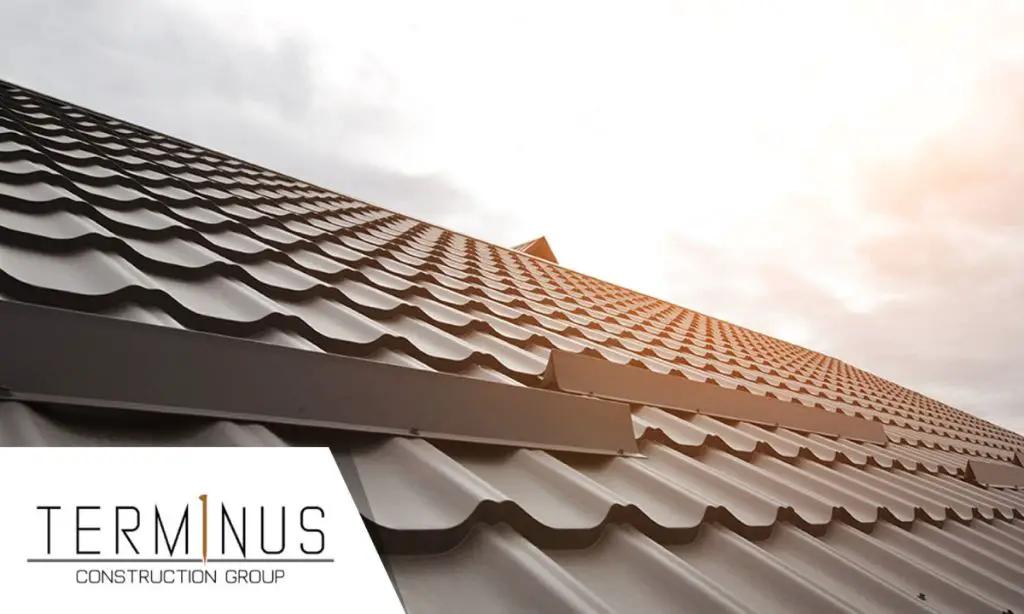A rain diverter, also known as a rainwater diverter or a downspout diverter, is a device that redirects rainwater runoff away from your home’s foundation. Installing a rain diverter can help prevent water damage and flooding issues around your home’s foundation when it rains heavily. But can you install a rain diverter on a metal roof specifically? Let’s take a closer look.
Page Contents
The Benefits of Installing a Rain Diverter on a Metal Roof
Installing a rain diverter on a metal roof can provide the following key benefits:
- Redirects rainwater away from your home’s foundation – This helps prevent flooding, water damage, erosion issues, basement leaks, and more.
- Prolongs the life of your metal roof – Diverts rainwater and debris which can otherwise lead to corrosion and rust over time.
- Prevents landscape flooding and damage – Redirects large volumes of rainwater from metal roofs away from landscaping.
- Helps control rainwater and drainage – Gives you greater control over where the rainwater flows and how it’s drained off your property.
Overall, adding a diverter to your metal roof is an effective way to protect your home and property from the heavy rainwater runoff that metal roofs are prone to.
What to Consider Before Installing a Rain Diverter on a Metal Roof
When deciding whether to install a rain diverter on your metal roof, there are a few important factors to keep in mind:
- Roof pitch – The steepness of your metal roof’s pitch will influence rainwater flow speed and volume. A rain diverter is more critical for very steep pitched metal roofs.
- Roof size – Larger metal roofs collect more rainwater runoff, making a diverter more useful.
- Water drainage issues – If your metal roof already struggles with rainwater drainage, a diverter can help control runoff.
- Foundation type – Homes with basements or crawlspaces may be more prone to water damage without proper drainage.
- Landscaping – Areas with gardens, slopes, or soil erosion around the home’s foundation can benefit from a diverter.
Evaluating factors like these will help you determine if a rain diverter is right for your property’s specific metal roof situation and drainage needs.
How to Install a Rain Diverter on a Metal Roof
When installing a rain diverter on a metal roof, proper placement and installation technique are key. Here are some step-by-step tips:
- Select an appropriate rain diverter design for your roof type and drainage needs.
- Choose a suitable location to install the diverter, considering optimal rainwater catchment and redirection away from the home’s foundation.
- Thoroughly clean the metal roof surface where the diverter will be installed and allow to fully dry.
- Apply butyl sealant tape to the underside of the diverter to create a watertight barrier.
- Use metal screws specifically made for metal roofing to attach the diverter securely into the roof.
- Caulk around the diverter edges for added leak prevention.
- Connect flexible downspout extensions to direct the redirected rainwater safely away from the home.
- Check that the diverter is securely installed and is effectively redirecting water flow after the first heavy rain.
Following manufacturer’s instructions for your specific diverter and having the right metal roofing attachment materials will also ensure proper installation.
Helpful Installation Tips
- Consider installing leaf filters with the diverter to prevent clogging drains.
- Use additional sealant at seams or patches in the roof near the diverter.
- Extend downspout extensions at least 6 feet from the home’s foundation.
- Make sure the diverter doesn’t redirect water onto nearby walkways, patios, or driveways.
- Consider hiring a professional roofer for installation if you don’t have metal roof experience.
Types of Rain Diverters for Metal Roofs
There are a few different designs of rain diverters made specifically to work with metal roofing:
Metal Rain Diverter Strips
- Thin strips of formed metal that adhere directly to the roof.
- Designed to seamlessly blend in and match metal roofing.
- Come in a variety of lengths to customize fit.
- Best for simple water redirection jobs.
Box-Style Metal Roof Diverters
- Completely enclose and catch rainwater from one area.
- Often made of stainless steel.
- Available in larger sizes to handle heavy water flow.
- Require secure mounting and additional drainage connections.
Half-Round Metal Roof Diverters
- Sit below roof seams to catch water without penetrating metal panels.
- Can attach to roofing screws for easy install.
- Low-profile design.
- Provides directed drainage without multiple attachments.
The best rain diverter type for your metal roof will depend on roof design, needed water flow capacity, and installation difficulty.
Cost to Install a Rain Diverter on a Metal Roof
On average, plan around these estimated costs to add a rain diverter to a metal roof:
- Rain diverter system: $100 – $500
- Additional drainage components: $50 – $200
- Professional installation: $200 – $1000
Exact costs will depend on:
- Roof size and number of diverters needed.
- Diverter type chosen.
- Complexity of installation.
- Need for drain extensions or buried drainage.
- DIY vs professional installation.
Overall, installing a professionally designed and mounted diverter system averages $1000 – $1500 for most homes. This investment can save you thousands in potential water damage over time.
Conclusion
Installing rain diverters on metal roofs is an effective way to manage rainwater runoff and prevent expensive home damage. Choose an appropriate diverter design based on your roof’s specifics and drainage requirements. With proper placement and installation, a quality metal roof diverter will provide years of protection by safely redirecting rainwater away from your home’s foundation.
